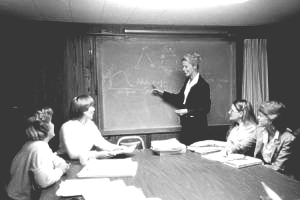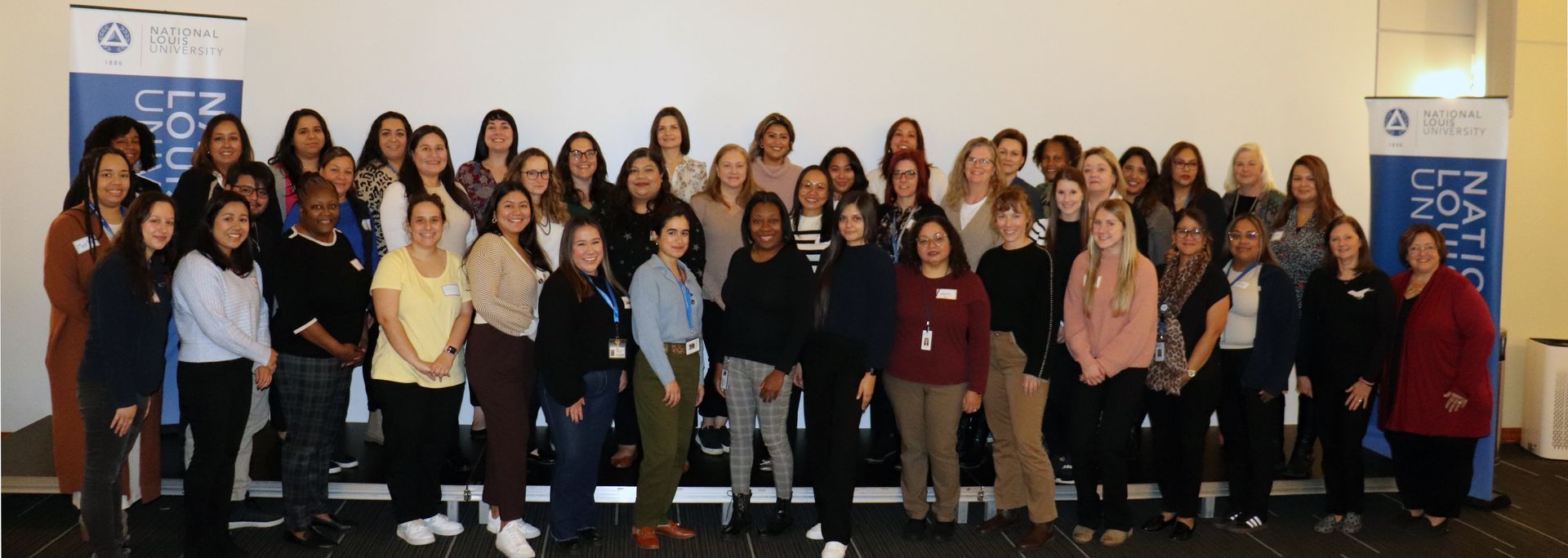BY Linda Butkovich, M.S.Ed. | November 2, 2020
In my role as Report and Certification Manager for the McCormick Center for Early Childhood Leadership, I reviewed hundreds of assessments for our state’s Quality Rating and Improvement System (QRIS). When reviewing reports for a program, I was impressed when I found all of the classrooms reflected a consistently high level of quality. As a former administrator, I know this level of consistency does not just happen. The key to this level of quality is an intentional focus on ensuring that new teachers receive a thorough orientation, all teachers receive ongoing feedback and support, and there are many opportunities for professional development. Behind the scenes, there is a leader who has systems in place to ensure that all teachers are supported in their work and given a clear vision of quality.
When I was an administrator, I remember times when I felt as though everything was going well, only to learn that one of our teachers had decided to take a new teaching position in another early care and education program. I then began the process of recruiting and selecting a new teacher to take their place. I must confess that most times, once I had found a new teacher, I provided a brief orientation and sent them on their way into their new classroom with little follow up. Remembering those times, the following quote from Margie Carter makes me cringe:
“We often lose potentially great members of our staff, not only because of inadequate wages, but because we throw them into a deep, Olympic-size pool without giving them carefully fitted goggles and a clear life-support system. How can they become long-distance swimmers if our orientation and staff development is focused only on treading water?”
According to Gallup’s Perspective on Creating an Exceptional Onboarding Journey for New Employees, only 12% of employees strongly agree their organization does a great job of onboarding new employees. The result is that many employers are losing their best people before they barely get started. How do we provide this kind of orientation or onboarding experience for new employees in early care and education? The first three items of the Program Administration Scale (PAS) outline concrete steps administrators can take to help ensure new employees are off to a good start and receive ongoing feedback and support.
The first item of the PAS, Staff Orientation, assesses whether the program provides an orientation for new staff. Are there written orientation procedures? How often have these procedures been reviewed to ensure they are complete and up-to-date? Is there a system to ensure staff orientation is consistently implemented?
For many organizations, the introductory or probationary period is 90 days, yet the actual orientation is often done in a week or less. According to the Gallup research, new employees typically take around 12 months to reach their full performance potential within a role. With this in mind, it is helpful to think of the end of the probationary period as the beginning of the new employee’s continuing professional development.
The second item of the PAS, Supervision and Performance Appraisal, measures whether there are regular opportunities for supervision and systemic performance appraisal for staff. Does the program have clear, objective, performance appraisal criteria that are shared with teachers as part of the orientation? Do they receive annual performance appraisals? How often are teaching staff formally observed and provided with written or verbal feedback based on these observations? This ongoing feedback and support are critical in teachers’ growth and development. However, according to the Gallup research, “Unfortunately, most employees receive far too little feedback from their manager—nearly half of employees receive feedback from their manager a few times a year or less.”
The third PAS item addresses ongoing staff development. Is job-specific staff development provided for all teaching, support, and administrative staff? Is staff development individualized, taking into consideration each employee’s strengths and areas of potential growth? Is there a system to support the career development of teaching and administrative staff? This ongoing professional development is critical to the success of all staff and to the overall success of the program. Through professional development experiences, staff gain new ideas and insights, they are challenged by new approaches, and learn to practice continuous improvement.
As I think back to my former self so many years ago, I am heartened by these words of wisdom from Maya Angelou: “When you know better, you do better.” I am hopeful that if I had more training and support, I would have done better to help our new staff become long-distance swimmers in their careers as early childhood teachers.
References
Create an Exceptional Onboarding Journey for Your New Employees. (2020, April 8). Retrieved September 19, 2020, from https://www.gallup.com/workplace/247076/onboarding-new-employees-perspective-paper.aspx.
Talan, T.N. & Bloom, P.J. (2011). Program administration scale: Measuring early childhood leadership and management (2nd ed.). New York, NY: Teachers College Press.
Additional Resource
Albrecht, K.M. (2015). The right fit: Recruiting, selecting, and orienting staff (2nd ed.). Lake Forest, IL: New Horizons.
Would you like to learn more about the Program Administration Scale (PAS) or other topics related to the administration of early care and education programs? If so, please look at our website for resources or contact us for information on training opportunities.
Linda Butkovich, M.S.Ed., is Report and Certification Manager for the McCormick Center for Early Childhood Leadership. In this role Linda oversees the Program Administration Scale (PAS) and Business Administration Scale for Family Child Care (BAS) certification system. Linda is also a national reliability anchor for the PAS and BAS. She holds a master’s degree in early childhood special education. Prior to joining the McCormick Center, Linda worked as a developmental therapist with children birth to three years of age and their families. She has also been director of an NAEYC-accredited program, teacher, and family child care provider. Linda also provides training, consultation, and mentoring for early childhood program administrators.






